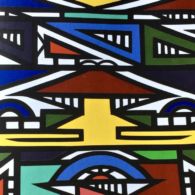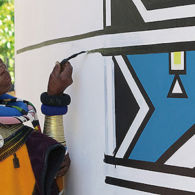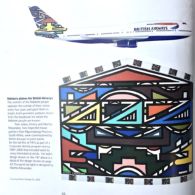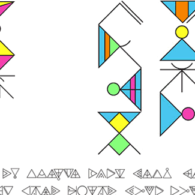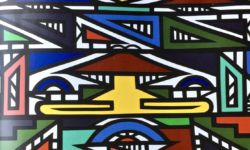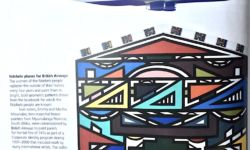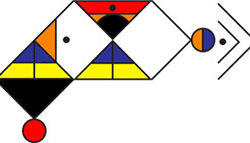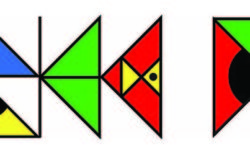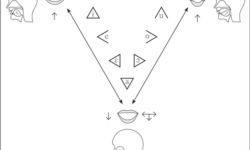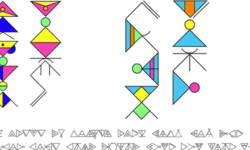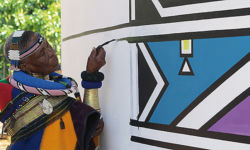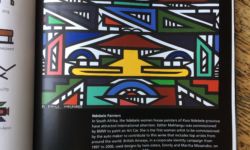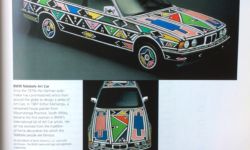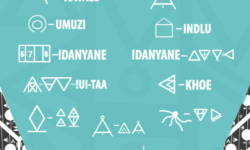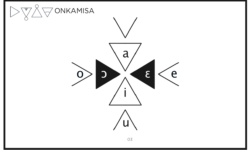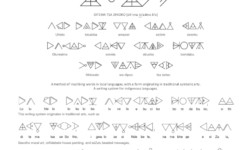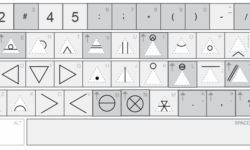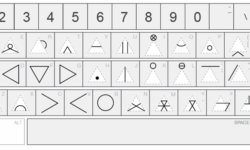Profile
African writing systems created over the past 200 years have a rich tradition of going beyond the Western convention that a letter is an arbitrary, abstract symbol whose purpose is to denote a spoken sound.
In some cases, the connection between visual symbol and meaning is so deep it draws writing into a range of symbols and practices that are deeply spiritual in nature and pre-date the act of writing – so a new script that draws on these images can also seem as ancient as civilization.
The Ditema tsa Dinoko script, also known as Isibheqe Sohlamvu, is the most stunning example of this tradition. It is possibly the most exact and illustrative writing system in the world, but at first glance, it doesn’t look like writing at all.
Pule kaJanolintshi, one of the designers involved in the development of the script, explains: “The script is based on the traditional symbologies of southern Africa, which are still used today in certain contexts, such as in Sesotho litema or IsiNdebele amagwalo murals, the knowledge of which is traditionally kept by women.”
Litema, based on the Sesotho word that means, fascinatingly, both “text” and “ploughed land,” is an art form based on decorative and symbolic patterns engraved, painted or moulded in the walls of homes. For centuries, women have combed the patterns (to imitate a ploughed field) or scratched them into the wet top layer of fresh clay and dung plaster of the wall and then painted them with naturally occurring pigments or, more recently, paint. Litema are not intended to be permanent, and usually dry or are washed off by the next rain. (Interestingly, a similar tradition exists in South Asia, called rangoli or kolam.)
IsiNdebele murals, vivid and often geometrical designs using colored clay and cow dung that often decorate Ndebele homes, seem both ancient and hypermodern – so much so that they have been used to paint a BMW for the company’s Art Car series, and the tail of a British Airways jumbo jet.
Other symbols for the script were drawn from basketry, beadwork and pottery traditions, and traditional symbols used by traditional healers.
Not surprisingly, the Ditema tsa Dinoko script that draws on these traditions is easily one of the most vivid and extraordinary writing systems in the world. It was developed between 2010 and 2015 by a group of linguists and designers to write southern Ntu languages such as IsiZulu, IsiXhosa, TshiVenḓa, XiTsonga, SeSotho, SiSwati, and SeTswana, including the marginalised languages such as Khelobedu, SiPhuthi, IsiBhaca, IsiMpondo, Sepulana and SiLala.
The script is amazingly detailed and specific, almost a blueprint more than an alphabet. For example, it is one of only a handful of scripts in which the direction a glyph faces is significant. A triangle pointing upward indicates one vowel (i), while one facing downward indicates another (a).
There’s also an element of diagramming involved to show where and how a sound is voiced. Labials and nasals are positioned outside the triangle at the apex; dentals are indicated by two lines across the triangle from side to side, parallel to each other.
Shape is central, and vital. Curved lines, for example, indicate fricatives. Their straight-line counterparts in the same positions indicate plosives.
Additional elements indicate sounds not found in English. Clicks are a bottomless hourglass shape. Syllabic laterals and trills are represented with duplication of the ordinary lateral and trill graphemes.
The writer has other opportunities usually associated with artists – the assignment of colors, for example. Drawing on traditions in the visual arts such as beadwork, color may have an associated mood or non-linguistic meaning: green may connote contentment, for example, but used negatively may imply discord or illness. Certain colors may have spiritual, ethnic or regional associations.
There’s no telling how widely adopted the script will become, of course, and as with all constructed scripts, we’re left holding our breath. But in one respect, the script has already started putting down new roots of its own. Unknown Union, a South African-based clothing company, has started incorporating features from Ditema and other African writing systems in its clothing designs, thus completing the circle from art/craft to writing and back again.
–Edited and updated by Eddie Tolmie.
You can help support our research, education and advocacy work. Please consider making a donation today.
Links
General Script, Language, and Culture Resources
Community Resources
Gallery
Sponsor

Make your translation budget go further or reduce costs without sacrificing quality; whatever your goals are, Memsource is the AI-powered translation management system (TMS) that enables you to make the most of your localization process.
Sponsor
“The Ditema tsa Dinoko script seems to gleefully summon the colors of Africa.”
—Ivan Brenes

